|
|
|
|
Seismic reservoir monitoring with simultaneous sources |
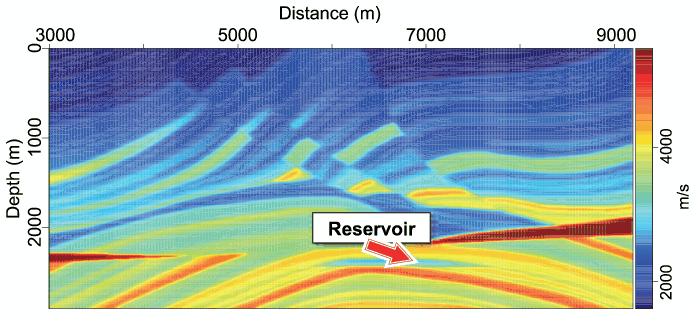
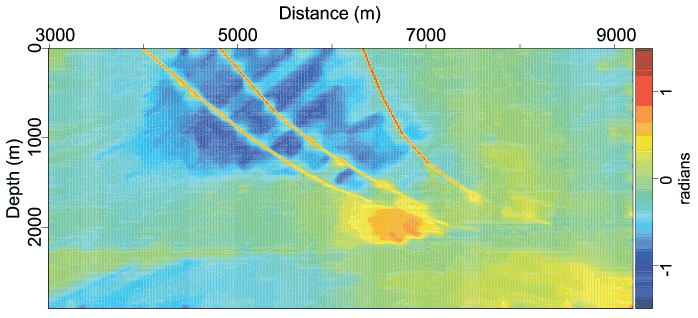
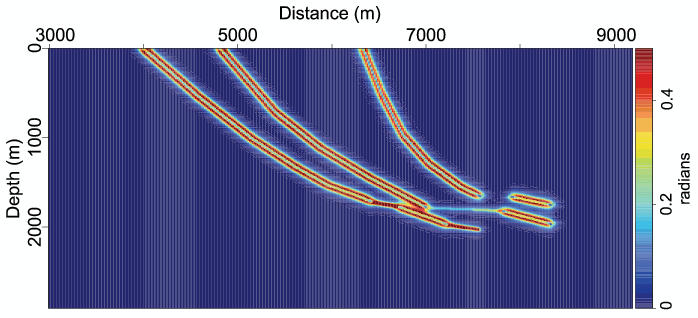
|
|---|
|
vel-0,dip-0,var-0
Figure 3. Baseline velocity model (a), dip-field computed from the migrated baseline image (b), and dip-variance estimated as a function of dip contrast (c). [CR]. |
|
|
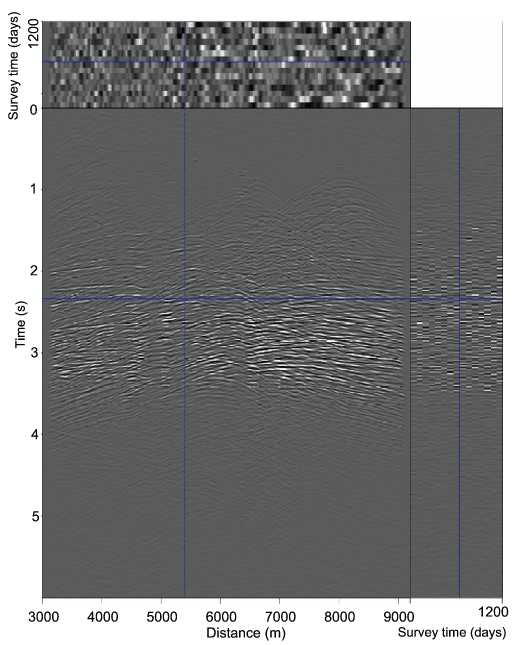
|
|---|
|
data-0
Figure 4. Synthetic data from multiple asynchronous sources. The third dimension denotes survey/recording time. [CR]. |
|
|
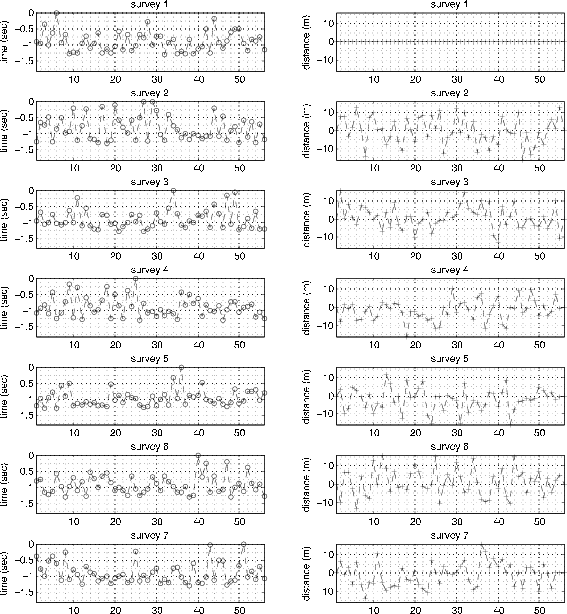
|
|---|
|
source-time
Figure 5. Plots of relative time-delays (left) and shot-displacements for seven out of the fifteen numerical models that were used to generate the data in Figure 4. In all plots, the horizontal axis indicates shot position. The relative shooting times are referenced to the earliest shot in each survey, whereas shot-displacements are referenced to the baseline shot positions. [NR]. |
|
|
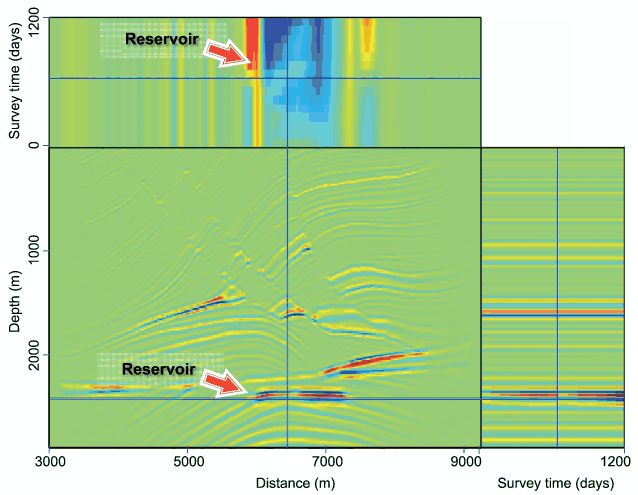
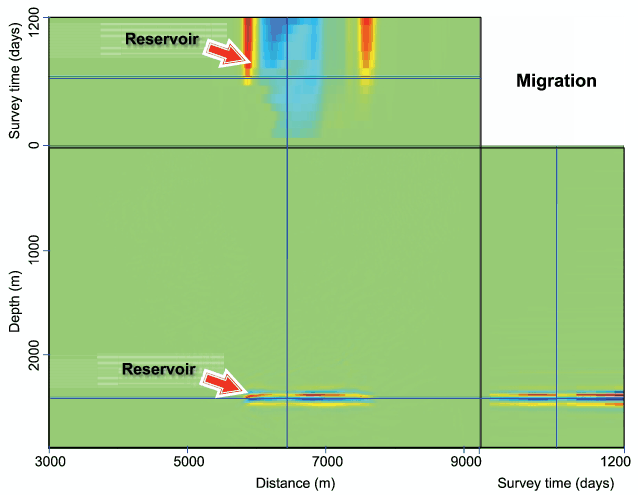
|
|---|
|
nomig,4d-nomig
Figure 6. Images (a) and corresponding time-lapse estimates (b) obtained from migrating perfectly repeated conventional (single-source) data sets. In this (and in similar) Figures, the side panel (third axis) shows the seismic properties (a) and time-lapse changes (b) at a fixed spatial position, whereas the top panel shows the spatial-temporal distribution seismic properties. [CR]. |
|
|

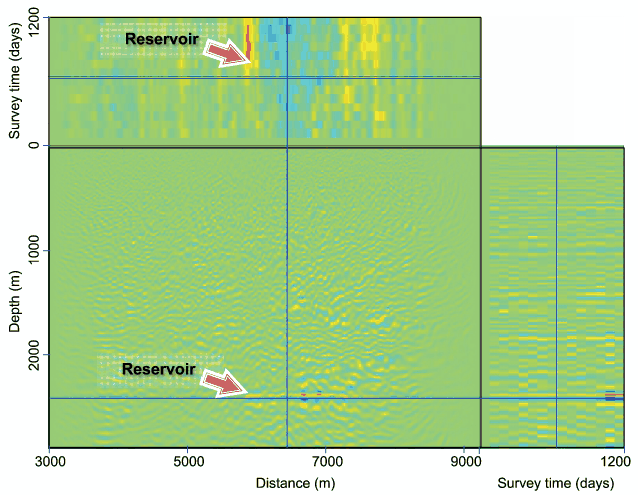
|
|---|
|
mig,4d-mig
Figure 7. Images (a) and corresponding time-lapse estimates (b) obtained from migrating the data sets in Figure 4. In both Figures, note the numerous artifacts caused by geometry and shot-timing non-repeatability and cross-term artifacts. Without attenuating these artifacts, it would be difficult to accurately interpret the time-lapse information. [CR]. |
|
|

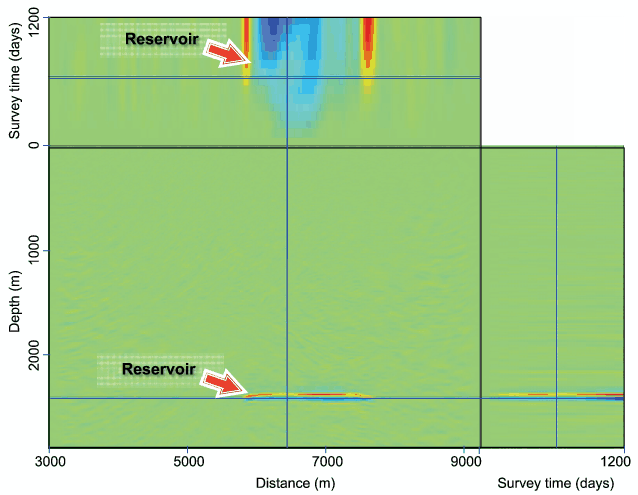
|
|---|
|
inv,4d-inv
Figure 8. Images (a) and corresponding time-lapse estimates (b) obtained from inverting the simultaneous-source data sets in Figure 4. Note that the non-repeatability and cross-talk artifacts in the migrated images (Figure 7) have been attenuated by inversion. Also, note the better resolution of the inverted images compared to the migrated single-source data (Figure 6). |
|
|

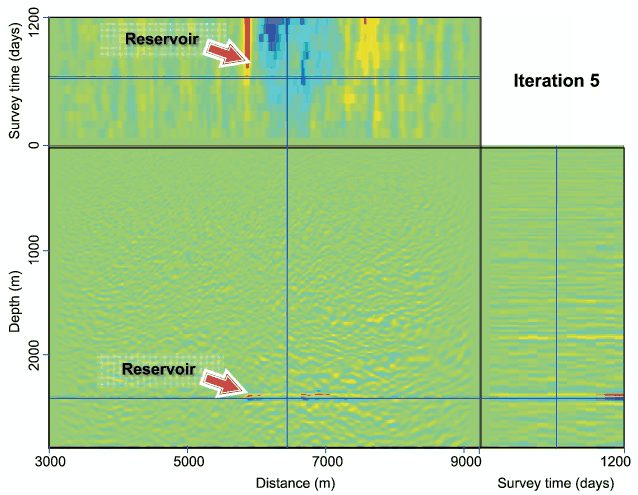
|
|---|
|
4d-inv-1,4d-inv-2
Figure 9. Time-lapse seismic images obtained after 2 and 5 conjugate gradient iterations (a) and (b) respectively. Note the gradual reduction in the artifacts compared to the time-lapse images from migration (Figure 7(b)). [CR]. |
|
|
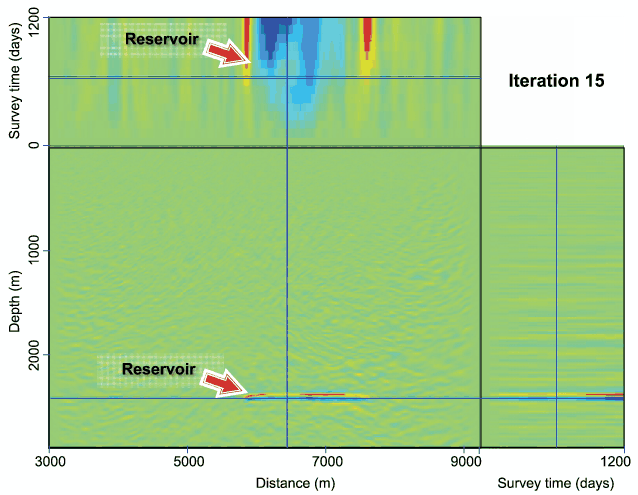
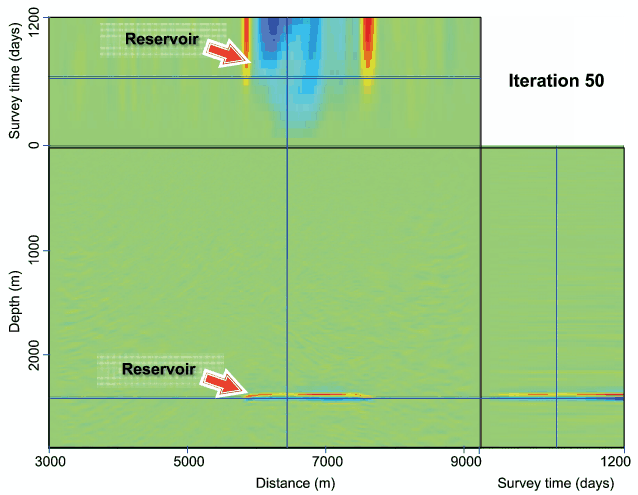
|
|---|
|
4d-inv-3,4d-inv-4
Figure 10. Time-lapse seismic images obtained after 15 and 50 conjugate gradient iterations (a) and (b) respectively. Note the reduction in the artifacts compared to the time-lapse images from migration (Figure 7(b)). [CR]. |
|
|
|
|
|
|
Seismic reservoir monitoring with simultaneous sources |